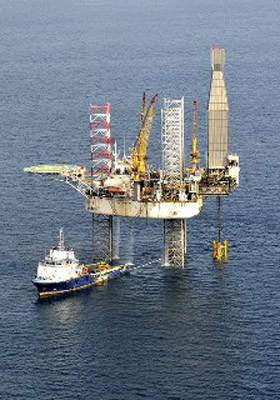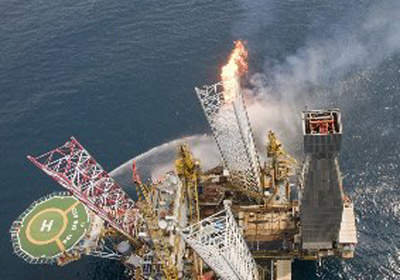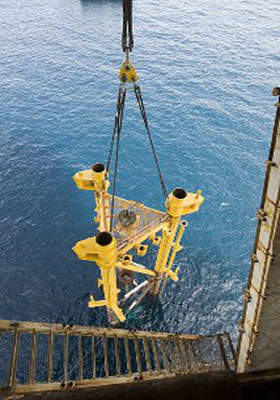Serica Energy, which is based in London, UK, began production in 2009 from the Kambuna gas field, which lies in 40m of water in the Malacca Straits, 40km off the coast of North Sumatra, Indonesia.
The company is operator of the 380km² Glagah Kambuna technical assistance contract (TAC), in which Kambuna sits. It held a 65% working interest while Salamander Energy held the remaining 35%. In August 2008 Serica sold 15% in the Glagah Kambuna to Salamander Energy. A further 25% stake was sold to KrisEnergy in January 2010 and Serica now owns a 25% interest.
Kambuna background
The Kambuna field was originally discovered by Bow Valley in 1986 but was not developed due to the then low price of gas in Indonesia and the block was relinquished.
The present TAC contract was awarded by PT Pertamina, the Indonesian state oil and gas company, in December 1996 but Serica has only been an interest holder and operator since April 2005.
In September 2005 Serica started drilling its first operated well, the Kambuna-2 appraisal well. This was drilled to a depth of 8,000ft. It tested gas at 17.5 million standard cubic feet per day and over 1,500bpd of 55° API gravity condensate on a restricted choke.
The field’s proven plus probable reserves, on a 100% basis, are 29.7 million barrels of oil equivalent.
Geology of Kambuna
The regional structure of the North Sumatra Basin shows three north-south trending uplifted features: Pakol Horst, Glagah Horst and the western margin of the Asahan Arch, which were initially formed in the late Cretaceous to early Tertiary period.
A prominent north-south trending tectonic lineament, the Rayeu Hinge, divides the basin into northern and southern parts. The northern sub-basin consists of depocentres where sediment thickness exceeds 30,000ft. Sediment thickness in the southern part of the basin is comparatively thin, except in the half-grabens next to the Palaeo-horsts.
The oldest sedimentary sequence drilled in the block is the late Oligocene to early Miocene Belumai Formation. These are underlain, however, by pre-rift-phase Tertiary sediments drilled in the Glagah-Kambuna TAC which, in turn, lie unconformably on Pre-Tertiary basement. The initial rift-phase sediments are represented by the lacustrine deposits of the Bruksah Formation and by the transgressive marine basinal shales of the Bampo Formation.
During the early Miocene era the sea level slowly receded, depositing carbonates and calcarenites of the Upper Bampo Formation, followed by the Belumai Formation. The low stand, shallow marine Belumai Formation consists of carbonates in the upper part with shales and dolomitic sandstones in the lower portion of the formation.
These form a potential reservoir for the block, as well as time-equivalent sediments that on-lap the Pakol and Glagah Horst basement highs.
Serica development plan
Serica’s development plan for the $160m project was approved by Pertamina in 2006.
By late 2007 / early 2008, the wellhead support tower was in place, and the company used a drilling rig sited over Kambuna-2 to drill two further development wells – Kambuna-3 and Kambuna-4 – which were complete by late April 2008.
Kambuna-3 was drilled to a total depth of 7,483ft true vertical depth below the mean sea level, while Kambuna-4 is a deviated well drilled from the wellhead platform at the Kambuna-2 to a subsurface location about 7,150ft to the south of Kambuna-2 and at a maximum deviation angle of 55° from the vertical. By early June 2008 the three wells had been tested and showed that their total maximum stabilised gas rate was 114mscfd, with an estimated 8,000bpd of condensate. Plateau production is expected to be 50mscfd of gas and 5,000bpd of condensate.
After testing, the wells were shut in to allow development work to continue. The plan was to develop the Kambuna field using a normally unmanned wellhead platform, located over Kambuna-2 and supported by a service / security vessel. The platform is fully self-contained with power generation from solar and utility gas.
First production from the Kambuna field started in August 2009.
Onshore terminal
Well stream fluids are exported from the platform, which is designed to support up to four wells, to a dedicated onshore terminal alongside state utility Pertamina’s LPG plant at Pangkalan Brandan. The fluids are commingled in a production manifold and exported to the onshore terminal via a 14in carbon steel pipeline. The platform topsides and offshore pipeline were installed in March 2009. Wet gas meters are provided on each flowline for flow control and reservoir management.
The terminal is designed to separate and condition the gas and the condensate to sales quality and will include pig receiver, inlet separator/slug catcher, dehydration, dew point control, condensate stabilisation, vapour recovery, water treatment and disposal, and sales gas and condensate metering. Space will be provided for the installation of a future booster compression system to enable delivery of the sales gas profile.
The terminal is designed to separate and condition the gas and condensate to sales quality and includes pig receiver, inlet separator / slug catcher, dehydration, dew point control, condensate stabilisation, vapour recovery, water treatment and disposal, and sales gas and condensate metering.
In late May 2008 Serica formally signed two contracts for the supply of gas from Kambuna, for the sale of 28mscfd to the state electricity generator PT Perusahaan Listrik Negara (PLN) and for 12mscfd to PT Pertiwi Nusantara Resources (Pertiwi).
Serica also signed a contract with state oil company Pertamina for the sale of 4mscfd of gas. The gas will be used for the production of LPG. Gas condensate from Pangkalan Brandan is transported by pipeline to Pertamina’s tank farm at Pangkalan Susu.
Kambuna contracts
The wellhead support was designed by Icon Engineering of Perth, Australia, and built by PT H&H Utama International at its yard in Balikpapan, Indonesia.






